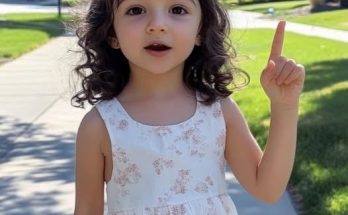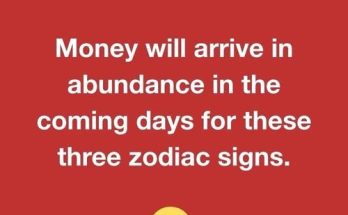When people talk about body image, one of the most common subjects is the size and shape of the bust. For generations, society has linked curves with femininity, attractiveness, and confidence. But the meaning of having a fuller bust goes beyond fashion magazines or cultural trends. It touches on identity, self-esteem, and even practical aspects of everyday life.
While every body is unique — and beauty never comes in just one size — it’s worth exploring what larger busts can mean from physical, social, and cultural perspectives. For many women, especially those in their later years, reflecting on body image can also bring a renewed sense of acceptance and appreciation for the way our bodies change with time.
A Fuller Silhouette and Physical Appearance
One of the first things people notice is how a fuller bust can shape the silhouette. Larger breasts often create a natural hourglass figure, where the bust, waist, and hips form balanced curves. For many cultures, this body type has long been seen as a symbol of feminine beauty.
From a fashion perspective, a larger bust can enhance the way clothing fits:
- Curvier outline in dresses and blouses: Fitted tops and wrap-style dresses often highlight the shape naturally.
- Natural cleavage without extra padding: For some, the appearance of fullness eliminates the need for heavily structured bras.
- Balanced proportions for some body types: A fuller chest can complement wider hips or create harmony in certain silhouettes.
Of course, clothing fit is highly personal. What feels flattering to one person may not be as comfortable for another, but the presence of natural curves can give many women more styling options.
Cultural and Social Perceptions
Beyond appearance, society has long connected the bust with deeper meanings. In many traditions, a larger bust is associated with fertility, maturity, and womanhood. Media portrayals often reinforce these associations, highlighting women with fuller figures as symbols of attractiveness.
This perception can bring both positives and challenges:
- Perceived attractiveness: Some people find fuller busts appealing, which can increase feelings of desirability.
- Confidence boost: When body size matches personal ideals or cultural preferences, it can raise self-esteem.
- Stereotypes and pressures: On the other hand, women may feel judged or overly defined by their bust size, rather than seen as whole individuals.
It’s important to remember that these cultural messages are shifting. The rise of the body positivity movement has expanded definitions of beauty, celebrating women of every shape and size. For many older women, this cultural shift has opened doors to greater self-acceptance.
Biological Role: Maternity and Breastfeeding
From a biological standpoint, the bust plays an essential role during maternity. While breast size does not determine milk supply, some women with larger breasts may have more fatty and glandular tissue, which can increase storage capacity. This sometimes allows for:
- Longer feeding intervals for infants
- Greater comfort in certain nursing positions
However, it’s worth emphasizing that milk production depends mostly on hormone levels and the frequency of nursing — not size. Still, for many mothers, the experience of nurturing a child adds a deeper layer of meaning to their body’s natural form.
Fashion and Clothing Fit
One of the most practical aspects of having a fuller bust is navigating the world of clothing. Some styles are especially designed to flatter or support women with more curves:
- Wrap dresses and V-necks: These styles highlight the neckline while offering a balanced, elegant look.
- Halter tops and structured blouses: They provide support while enhancing natural shape.
- Built-in bra support in swimwear and activewear: Many clothing brands create supportive designs specifically for fuller busts.
For seniors, comfort becomes just as important as style. Fortunately, today’s fashion industry offers far more inclusive options than in the past, making it easier to find clothing that is both flattering and practical.
Social and Media Representation
The way larger busts are portrayed in the media has shaped cultural perceptions for decades. Celebrities, models, and influencers often showcase curves in glamorous, idealized ways. For some women, this representation has reinforced feelings of pride in their natural shape.
At the same time, social media and body positivity campaigns have helped shift the narrative. Instead of only celebrating one type of figure, modern movements encourage women to embrace whatever size they are. Representation now includes women with diverse shapes, reminding us that beauty is not one-dimensional.
This cultural change is especially meaningful for older adults who may have grown up in eras with stricter beauty standards. Today, there’s a greater chance to see oneself reflected positively, regardless of size.
Challenges of a Fuller Bust
While much of the conversation highlights the benefits, it’s worth noting that larger breasts can sometimes bring challenges too:
- Posture and back strain: Extra weight on the chest can affect posture and cause discomfort.
- Finding supportive bras: Comfortable undergarments are essential and not always easy to find.
- Unwanted attention or assumptions: Some women feel uncomfortable with the social reactions to their body shape.
Acknowledging these challenges helps create a more balanced, honest view. Body image is never just about positives or negatives — it’s about living comfortably and confidently in the body we have.
Embracing Body Confidence at Every Age
For many seniors, conversations about body image take on new meaning. Aging naturally changes our bodies, from weight distribution to firmness. But instead of viewing these changes as flaws, many women discover a deeper appreciation for their body’s history.
Having a fuller bust — or any body shape — becomes less about fitting cultural ideals and more about personal comfort, health, and self-acceptance. Confidence comes not just from how we look, but from how we feel about ourselves and the wisdom we’ve gained over the years.
A Fuller Bust as Part of the Bigger Picture
In the end, the meaning of a larger bust is not just physical. It’s emotional, cultural, and deeply personal. For some, it symbolizes beauty, confidence, or motherhood. For others, it represents challenges they’ve learned to manage with grace.
What matters most is how each individual chooses to see herself. Whether celebrated for style, honored for function, or simply embraced as a natural part of one’s body, a fuller bust is just one thread in the rich tapestry of womanhood.
And perhaps the greatest lesson is this: beauty is not defined by size, but by confidence, self-love, and the stories our bodies carry through time.



